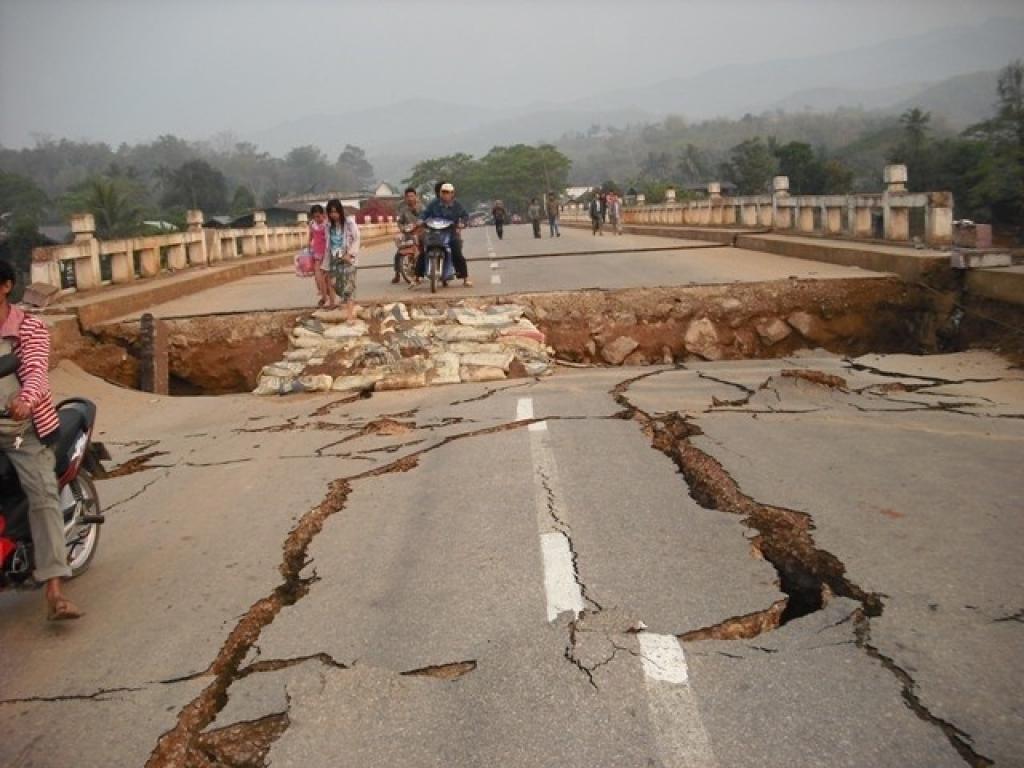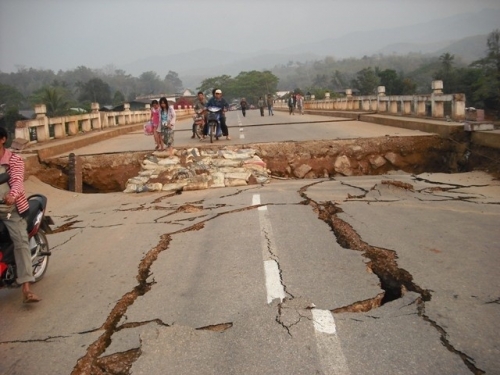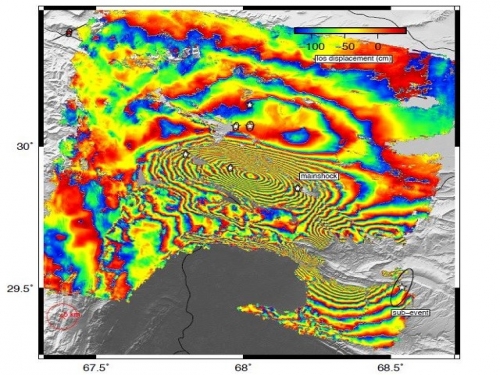Double earthquake trouble


On 27 February 1997 at 21:08 UTC, the ongoing collision between the Indian and Eurasian tectonic plates caused an earthquake that was felt throughout the Harnai area of Pakistan. At the time, the quake was recorded as being a single 7.1-magnitude event.
Skip forward to 2004. Gareth Funning, then a graduate student at the University of Oxford, first noticed that satellite data for the Harnai quake showed the possibility of two sub-events, occurring close together in space and time. Funning started working on the study but shelved it until four years ago, when he began to work on it again in collaboration with Associate Professor Edwin Nissen of the Colorado School of Mines.
Next, Nissen – together with researcher Dr John Elliott (Oxford University) – discovered another anomaly of the Harnai quake events. Using InSAR (a technique that works by comparing two satellite radar images) to map ground deformation associated with the earthquake, they discovered that there were two distinct patches of ground deformation around the area where the earthquake struck. The images used were taken years apart, however, so the reason for the movement remained ambiguous.
Cue the involvement of Dr Alastair Sloan, a seismologist at the University of Cape Town. “It was fairly clear that the larger patch was associated with the Harnai earthquake,” he explains, “but the smaller patch could have been related to one of the smaller aftershocks some time after the main event, or it could even have been aseismic (it could have moved without an earthquake occurring at all).”
To understand the cause of the second patch of ground deformation, Sloan looked at individual seismic records of the main event from around the world. He identified an unexplained arrival in many of them that implied a second, smaller earthquake. “Qualitatively, the way that the relative timing between this arrival and the first arrival from the main event varied at different stations suggested that this sub-event was to the east of the main event, in line with what we saw in the InSAR,” he says.

The chance of one earthquake (main shock in picture above) triggering another (sub-event) in a nearby fault is higher than previously thought.
To confirm this hypothesis he relocated the main event, the aftershocks and the mysterious arrival that he had discovered using a technique that produces extremely accurate relative earthquake relocations. This confirmed that the sub-event lined up with the second patch of deformation, that none of the aftershocks were anywhere near it, and – surprisingly – that the sub-event started on the eastern side of the second fault: the far side from the main event.
Using this evidence, his collaborators on the project could use simple physical models to determine how the first event could have triggered the second. Sloan explains that because they were able to pin the earthquake initiation down to the eastern side of the fault, they could use these models to rule out the usual explanation for earthquake triggering. “In the past, the explanation for this has usually been ‘static triggering’, where the earthquake sets up stresses in the immediate surrounding rock that can move other faults nearer to failure,” he explains. “But the relocation ruled this out, suggesting that it was in fact a case of ‘dynamic triggering’ – a more controversial process, in which passing seismic waves from the first event trigger the second.”
In other words, in the case of the Harnai quake, it shows that the first earthquake of a magnitude of 7.0 caused the second 6.8-magnitude earthquake, which occurred 19 seconds later and 50 kilometres to the south-east.
So what does this mean for our understanding of earthquakes?

Dr Alastair Sloan
The findings of the team, which were published last month in a paper entitled ‘Limitations of rupture forecasting exposed by instantaneously triggered earthquake double’ in the journal Nature Geoscience, are significant because they show that an earthquake originating on one thrust fault can “jump” much further than previously thought to a second nearby fault, sparking a second earthquake or an “earthquake doublet”, which can cause double the amount of destruction.
A thrust fault is a crack in the earth’s crust in which one layer of rock is pushed up and over an often older stratum due to compression. Such faults are less well understood than strike-slip faults, such as the San Andreas, in which a vertical fracture causes two areas to move parallel to one another. Thrust faults occur in close proximity in many earthquake-prone regions, including California, areas of Iran and Tehran, and on the southern slopes of the Himalayas, in places such as India, Nepal and Pakistan.
“The fact that this triggering appears to have occurred over a distance of about 50 kilometres is significant, because it is ten times the value assumed possible by seismic hazard models adopted in places such as California,” says Sloan. In the past, scientists assumed that such jumps could only happen over distances of up to five kilometres.
Dr Sloan hopes that the findings from the study can be used to modify existing seismic hazard models, to guard against the destructive risk that such double earthquakes pose.
Story by Ambre Nicolson. Photo of road damage caused by earthquake in public domain. All other images courtesy of Alastair Sloan.